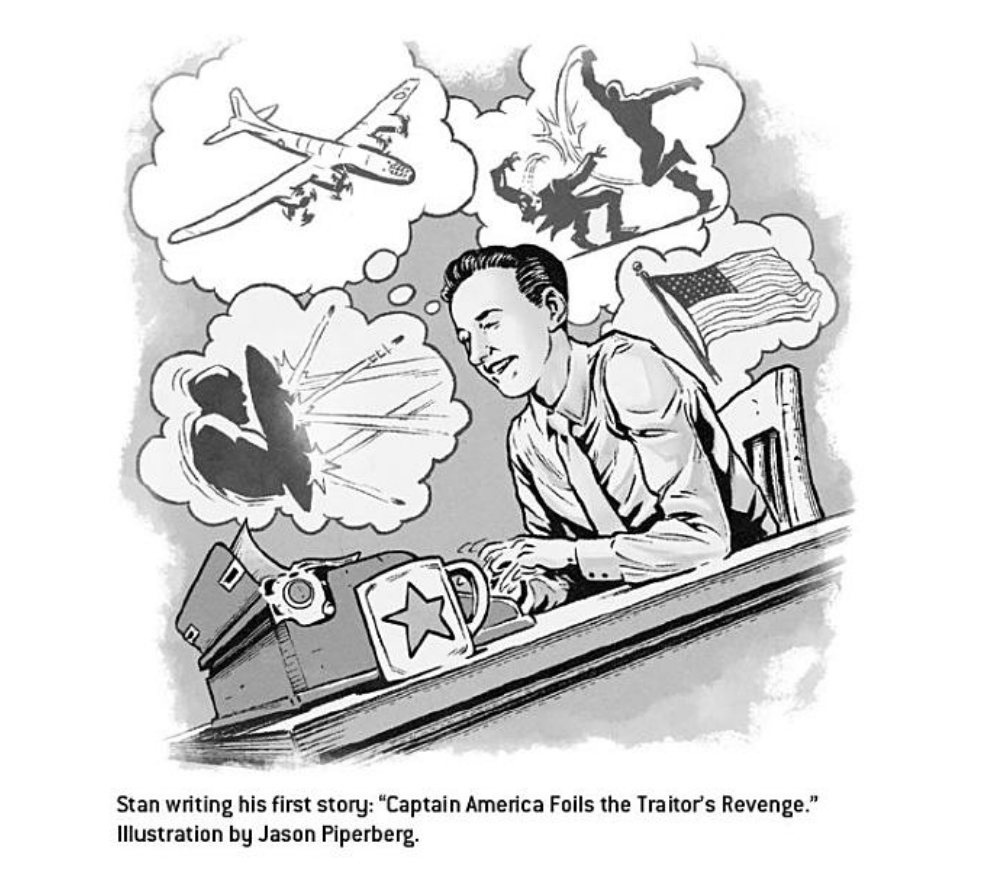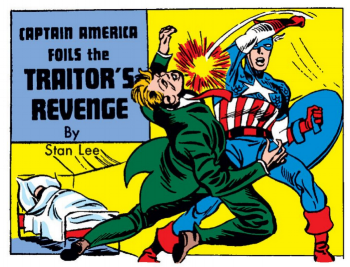How Does Stan Lee Get into Comic Books? A Stroke of Luck or Something Else?
Stanley Lieber uses the pseudonym “Stan Lee” in his first published story!
Rising up to his feet and towering over a messy desktop with drawings strewn haphazardly about and correspondence littering every square inch, Timely Comics head writer and editorial director Joe Simon reached out his hand to welcome his new young assistant. Cigar smoke is thick in the room as Simon’s big hand comes at the teenager sitting in front of him.
Still a little dizzy from getting the job, Stanley Leiber vigorously pumped the older man’s hand – A steady paycheck…He would make eight dollars a week! He had recently graduated from high school, the DeWitt Clinton Class of 1939.
For a young man struggling to find full-time work, the pay meant that he might help the family regain its footing. They had been reeling since his father Jack couldn’t find work in the dressmaking industry throughout the tough years of the Great Depression. The job gave the teenager security and a shot to prove himself in writing and publishing. Words appealed to the boy—always had.
Stanley dreamed of one day writing the Great American Novel.
But in this new job, Stanley had to start at the bottom. He plied away as an office boy for Simon and the other full-time Timely Comics employee – artist and writer Jack Kirby. Little more than an assistant, some days he refilled Kirby and Simon’s inkwells. He had the mammoth task to get the two men sandwiches while the duo concocted new superhero stories.
Lieber worked with enthusiasm, even if he spent hours sweeping floors or erasing stray pencil marks on finished pages to prep them for publication. The youngster achieved his primary goal – simply finding a permanent position. He watched and learned from two of the industry’s budding stars.
More importantly, Stanley had a job! His father’s fate would not befall him. He set off on a career.
The Timely Job at Timely Comics…And a Mystery!
Many episodes in Stanley’s early life are shrouded in uncertainty. How the teenager bounded from Clinton High School to Simon and Kirby’s assistant at Timely involves both a bit of mystery and a touch of mythmaking.
There are several versions of his Timely Comics origin story. One account begins with his mother Celia. Clearly she put her hopes in her oldest son, particularly since her faith in her husband nearly led the family to ruin.
Here we have Celia telling Stanley about a job opening at a publishing company where her brother Robbie worked. Without delay, the young high school grad shows up at the McGraw-Hill building on West 42nd Street, but knows little about the company or comic books. With Robbie’s prodding, Simon explains the business and how comic books are made. He then offers the teen a job. Basically, he and Kirby are so frantic and overworked, particularly with their new hit Captain America, that they just need someone (anyone, really) to provide an extra set of hands.
Robbie Solomon is also at the center of a different account (here the main player), essentially a conduit between Simon and owner Martin Goodman. In addition to being Celia Lieber’s brother, Robbie married the publisher’s sister Sylvia. Goodman surrounded himself with family members, despite the imperious tone he took with everyone who worked for him. Receiving Robbie’s stamp of approval (and the familial tie) made the boy’s hire fait accompli. Simon, then, despite what he may or may not have thought of the boy, basically had to take Leiber on. “His entire publishing empire was a family business,” explained historians Blake Bell and Michael J. Vassallo. Solomon had a strange job – a kind of in-house spy who ratted out employees not working hard enough or playing fast and loose with company rules.
While the family connection tale is credible and plays into the general narrative of Goodman’s extensive nepotism, Lee offered a different perspective, making it more of a coincidence. “I was fresh out of high school,” he recalled, “I wanted to get into the publishing business, if I could.” Rather than being led by Robbie, Lee explained: “There was an ad in the paper that said, ‘Assistant Wanted in a Publishing House.’” This alternative version calls into question Lee’s early move into publishing – and throwing up for grabs the date as either 1940, which is usually listed as the year of his hiring, or 1939, as he later implied.
Lieber may have not known much about comic books, but he recognized publishing as a viable option for someone with his skills. He knew that he could write, but had no way of really gauging his creative talents. Although Goodman was a cousin by marriage, he did not have much interaction with his younger relative, so it wasn’t as if Goodman purposely brought Lieber into the firm. No one will ever really know how much of a wink and nod Solomon gave Simon or if Goodman even knew about the hiring, though the kid remembered the publisher being surprised the first time he saw him in the building.
The teen, though bright, talented, and hard working, needed a break. His early tenure at Timely Comics served as a kind of extended apprenticeship or on-the-job training at comic book university. Lieber was earnest in learning from Simon and Kirby as they scrambled to create content. Since they were known for working fast, the teen witnessed firsthand how two of the industry’s greatest talents functioned. The lessons he learned set the foundation for his own career as a writer and editor, as well as a manager of other highly talented individuals.
Stan Lee: A Life, by award-winning historian Bob Batchelor


